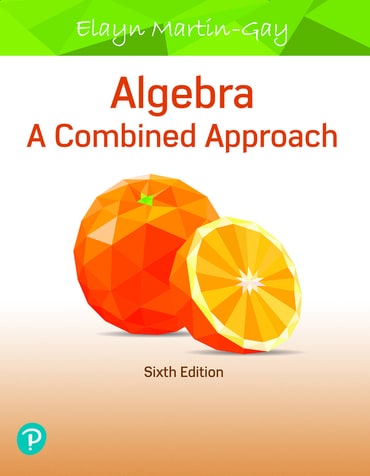Switch content of the page by the Role togglethe content would be changed according to the role

Algebra: A Combined Approach, 6th edition
Published by Pearson (July 15, 2020) © 2020
- Elayn Martin-Gay University of New Orleans, Lakefront
12-month access eTextbook
C$64.99
ISBN-13: 9780136881186
Algebra: A Combined Approach
Published 2020
Paperback
C$316.65
ISBN-13: 9780135225035
Algebra: A Combined Approach
Published 2019
24-month access
C$162.49
ISBN-13: 9780135256336
MyLab Math with Pearson eText (24 Months) for Algebra: A Combined Approach
Published 2019
Need help? Get in touch